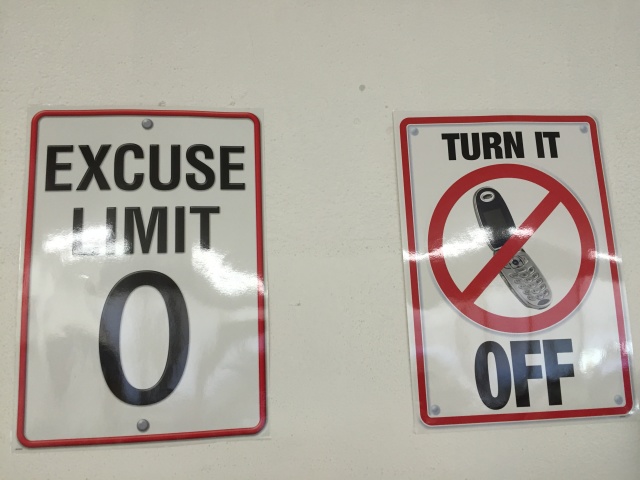The Oklahoma City Public School System is seeking community input regarding the proposed plan to convert up to six schools into charters. I spoke against the charter plan at the board meetings, and I have communicated with several of its proponents and opponents since then. These are some of the issues that should be addressed before such a plan is seriously considered.
Arguments for scaling up No Excuses schools
Elizabeth Green, the author of Building a Better Teacher, has documented the shortcomings of No Excuses schools, saying they need a “radical overhaul.” But, Green writes, “… the highest academic results ever produced for poor students and students of color have come from no-excuses schools. Period.” Green acknowledges that those results are measured by flawed standardized-test data, but she still articulates that they are “the final compelling argument in favor of the no-excuses schools.” She concludes that No Excuses schools “are capable of changing, and that they can do this, to borrow their own language, ‘at scale.’”
The argument for parents, who sometimes have no other choice but to send their children to high-challenge middle schools, is more personal. Too often, the chaos of neighborhood middle school robs children of an opportunity to get a meaningful education. Moreover, periodic and underfunded efforts by school systems to reduce suspensions can create even more disorder in neighborhood schools where large numbers of kids have suffered so much trauma that the pain they bring to school prompts extreme misbehavior.
Some parents hope that pushing No Excuses methods down into elementary school will keep children from falling behind in the first place. Some charter supporters hope that they can figure out and standardize methods of teaching children the socio-emotional traits necessary for success in school and on the job. And, some parents and charter supporters believe that schools must prepare children, especially children from poverty, for competition in the global marketplace, which they expect will become more brutal and unforgiving.
Some argue that the structured methods of instruction promoted by No Excuses schools should be taught to teachers in traditional public schools. Also, Santa Fe South is an example of a charter school that could help promote procedures for reaching out to parents. Finally, it is hoped that charter advocates will contribute private resources for expanding these charters. According to NewsOK’s Tim Willert, the district apparently would replace neighborhood schools with charters to “solicit more corporate support (…) that will alleviate some of the strain on the district to come up with operational money.”
Arguments against scaling up No Excuses schools
The question is not whether No Excuses charters can be overhauled and scaled up. The issue is, what will happen if they are scaled up in Oklahoma City? How many children will benefit and by how much? How many children will be hurt, and how badly will they be hurt?
Green’s research has focused on schools that often have more than double the per-student funding of Oklahoma City schools. (Although it is unlikely that KIPP funding would be publically revealed, the best estimate in three states is that KIPP schools spend about 30 percent, 50 percent and even 100 percent more, respectively, than what those states spend on the average.) The OKCPS charter plan would be implemented in the wake of funding cuts of 25 percent since the Great Recession, with $30 million more cuts anticipated.
Green also concludes that the challenge of reforming no-excuses pedagogies will get tougher as their numbers expand. Green says that the No Excuses pedagogy must change its approach so that students “have ample opportunities to make mistakes, both behavioral and academic.”
The veteran education reporter observes that perhaps No Excuses began as a step toward creating the discipline necessary for teaching and learning for mastery, but it became the schools’ “100 percent” principle where “at its heart the no-excuses idea actually represented an end, not a means.”
When No Excuses was introduced in the $60 million-plus Houston Apollo 20 pilot project, the resulting increase in attrition was mostly driven by low-performing students. So many kids gave up that high schools began the experiment with a low-income rate of 86 percent, but, by testing time, the schools were 61 percent low-income. In other high-cost efforts, the numbers of “disconnected youth” — students out of school and without jobs — and the racial achievement gap grew worse. Moreover, locally as well as nationally, No Excuses charters serve far smaller percentages of students on individualized education programs (IEPs) for special education students, especially for serious emotional disturbances and conduct disorders.
Patrons mostly choose charters because they seek safe and orderly environments, not better teaching. One reason why charters, despite their advantages, typically fail to increase student performance is that they replace veteran teachers with a revolving cycle of inexperienced teachers who quickly burn out. Worse, those improving test scores often are meaningless, and they come at a cost: Students are denied art, music, sports and other holistic learning opportunities. The most important issue in terms of instruction has largely been ignored: Do we really want to scale up the No Excuses structure, not only for middle schools, but for the youngest children in elementary schools?
Also, there is no guarantee that qualified local-charter authorizers or high-quality national charter-management organizations (CMOs) will agree to start schools in such a budget crisis. To do so, they would have to abandon their business models and go where no charters have ever successfully gone. Almost certainly, many of the best, highest-paid veteran administrators and teachers will be forced to transfer out of the schools converted into charters. So, it is equally unlikely that there will be enough qualified school leaders and teachers to staff multiple charters.
Even if authorizers commit to serving entire neighborhoods and to not impose the brutal teaching methods that have become much more common as No Excuses schools are scaled up, they may not be able to keep those promises. Nationally, as charters are expanded and serve students who are more challenging, they become more likely to “counsel out” students, to secretly keep “gotta go” lists of students to be “exited,” and/or engage in indefensible practices such as rip and redo and the berating of first graders that was shown in a New York Times video.
These clear patterns raise the specter of large numbers of students fleeing No Excuses charters. This would be an extreme hardship for families and neighboring schools. If charters take over an entire feeder area, many parents will face a maddening dilemma. One or more of their children might fit and/or excel in charters, while one or more of their children will be incapable of functioning in their charter.
Former charter students may fall behind as their parents search for a traditional public school that is not prohibitively far away. And, accommodating these students will be an even greater challenge for schools that may already be 90 percent to 100 percent low-income while struggling with the higher class sizes, fewer student supports and other problems made worse by the budget crisis.
Other questions that should be asked
The biggest questions in the short term are what will happen if Oklahoma City faces the same, predictable result of the same reforms in other cities, and one-quarter to one-third or more of students in the converted charters find that they can’t function in their new schools.
Then, neighborhoods and the community as a whole should be asked whether they would prefer alternatives to No Excuses and charter schools. Patrons should also be asked whether they would prefer full-service community schools, where early education, nutrition, health and mental health services are offered inside schools, and students are taken on field trips where they are introduced to the full diversity of Oklahoma City. Especially in near-downtown neighborhoods seeking to attract and retain millennial families, young parents might prefer socio-economic integration to create racially and economically diverse neighborhood schools.
Oklahoma City should join the conversation that is being stimulated by one of the most successful and strictest No Excuses chains, Mastery Charter. When it became a charter, Mastery changed from a 100 percent low-income school to a 65 percent low-income school. After years of benefitting from a regime that “drove some of [the most-challenging-to-educate] students away — into floundering neighborhood schools with the neediest students,” Mastery’s founder is contemplating the end of No Excuses education reform. The Philadelphia charter chain is even contemplating an end to its extreme teach-to-the-standardized-test, drill-and-kill instruction. Perhaps we can even discuss a middle ground between the tolerance of misbehavior that so angers teachers and patrons in neighborhood schools and the extreme behaviorism of No Excuses charters.
A great starting point for such a discussion would be PBS’s Independent Lens, which showcased humane, science-based and proven methods pioneered by the Tulsa Union School System. Its documentary, The Graduates, featured the high-quality early education that Tulsa provides for the child of a low-income Hispanic teen mother, and then it shows how Union’s alternative-education program gives the mom a second chance. Oklahoma City should have the opportunity to discuss whether we would prefer those sorts of investments for our kids.
Rather than take the risks involved in rapidly scaling up schools that have little or no experience with the challenges of high-poverty neighborhood schools, perhaps Oklahoma City should emulate a New York City pilot project. When New York City co-located charters in buildings that also served neighborhood schools, discord was sowed among students. Kids in the favored schools would taunt the kids in the traditional public schools, saying things like, “You will work for us one day.” Reacting to the discord, the city is now starting an experiment where 19 schools are treated as equals. They mentor each other on restorative justice and assisting English-language Learners.
Which brings us to the fundamental question that should be contemplated: What would parents do if given the opportunity to participate in an experiment that was likely to benefit one or more of their children, but that would likely hurt one or more of their other children? Wouldn’t they seek a more humane option?






















